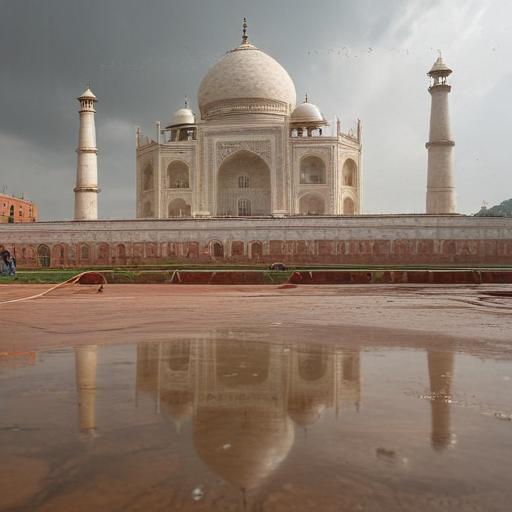The Taj Mahal, a remarkable UNESCO World Heritage Site located in Agra, is reportedly experiencing water leakage issues once again, coinciding with favorable rainfall predictions for the monsoon season. Recent thermal scanning by the Archaeological Survey of India (ASI) has identified a seepage point in the dome, which stands at 73 meters high. The ASI’s ongoing inspection is expected to take approximately 15 days, after which expert technicians will begin repair work on the dome.
The ASI’s investigation, utilizing advanced Light Detection and Ranging (LiDAR) technology, revealed several concerning findings. Notably, the mortar between the stones of the main dome has deteriorated significantly, while both the door and floor of the dome’s roof have weakened. Additionally, an iron rod supporting the finial has suffered from rust erosion, leading to the surrounding mortar expanding and ultimately causing the leakage.
In a proactive response, scaffolding has been erected on the main dome, allowing the ASI team to conduct a thorough physical assessment. Over the coming fortnight, they will examine for cracks and determine if any stones have loosened or if mortar is missing.
Water leakage at the Taj Mahal is not a new phenomenon; in fact, similar issues were reported last September, when heavy rainfall led to water dripping near the mausoleum’s inner graves of Shah Jahan and Mumtaz. Historical records indicate that such leaks have been a recurring theme over the centuries, with the first reported instance occurring in 1652 during Aurangzeb’s reign. Subsequent repairs were carried out in 1872 and again in 1941, emphasizing the monument’s enduring struggle against the passage of time and environmental factors.
Efforts to address these issues underscore the commitment to preserving this iconic structure, ensuring that it remains a symbol of enduring love and architectural beauty for future generations. The ASI’s inspection and repair initiative reflects a proactive approach to heritage conservation that provides hope for the continued care of this remarkable monument.
